by Eric Meier
When attempting to identify a wood sample, it’s important to keep in mind the limitations and obstacles that are present in our task. Before starting, please have a look at The Truth Behind Wood Identification to approach the task in a proper mindset; I consider the linked article to be required reading for all those visiting my site with the intent of identifying wood.
1. Confirm it is actually solid wood.
Before proceeding too much farther into the remaining steps, it’s first necessary to confirm that the material in question is actually a solid piece of wood, and not a man-made composite or piece of plastic made to imitate wood.
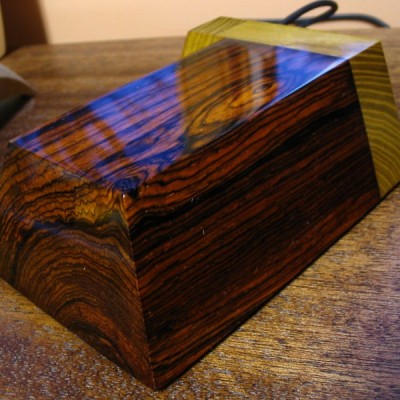
Can you see the end-grain?
Manufactured wood such as MDF, OSB, and particleboard all have a distinct look that is—in nearly all cases—easily distinguishable from the endgrain of real wood. Look for growth rings—formed by the yearly growth of a tree—which will be a dead-giveaway that the wood sample in question is a solid, genuine chunk of wood taken from a tree.
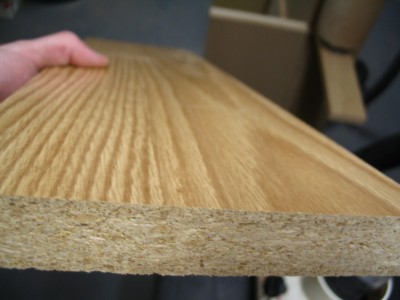
Is it veneered?
If you see a large panel that has a repeating grain pattern, it may be a veneer. In such cases, a very thin layer of real wood is peeled from a tree and attached to a substrate; sometimes the veneer can be one continuous repeating piece because it is rotary-sliced to shave off the veneer layer as the tree trunk is spun by machines. Assuming it is a real wood veneer with a distinct grain and texture—and not merely a piece of printed plastic—you may still be able to identify the outer veneer wood in question, but you should still realize that is it only a veneer and not a solid piece of wood.
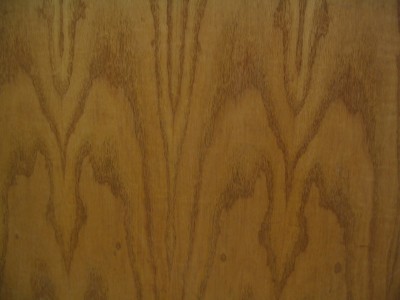
Is it painted or printed to look like wood?
Many times, especially on medium to large-sized flat panels for furniture, a piece of particleboard or MDF is either laminated with a piece of wood-colored plastic, or simply painted to look like wood grain. Many of today’s interior hardwood flooring planks are good examples of these pseudo-wood products: they are essentially a man-made material made of sawdust, glues, resins, and durable plastics.
2. Look at the color.
Some questions to immediately ask yourself:
Is the color of the wood natural, or is it stained?
If there is even a chance that the color isn’t natural, the odds are increased that the entire effort of identifying the wood will be in vain.
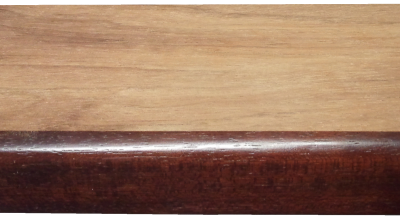
Is it weathered or have a patina?
Many woods, when left outside in the elements, tend to turn a bland gray color. Also, even interior wood also takes on a patina as it ages: some woods get darker, or redder, and some even get lighter or lose their color; but for the most part, wood tends to darken with age.
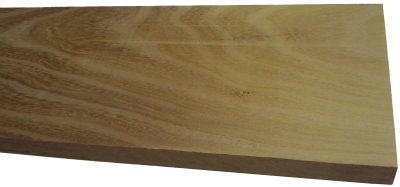
Is it possible to sand or plane the board to see the natural raw color of the wood?
The most predictable baseline to use when identifying wood is in a freshly sanded state. This eliminates the chances of a stain or natural aging skewing the color diagnosis of the wood.
3. Observe the wood grain.
If the wood is unfinished, then look at the texture of the grain. Ask yourself these questions:
Does the wood have an open, porous texture?
Most softwoods will be almost perfectly smooth with no grain indentations, while many common hardwoods have an open pore structure, such as oak or mahogany; though there are some hardwoods that are also smooth to the touch, such as maple.
Can you tell if the wood is quartersawn or plainsawn?
By observing the grain patterns, many times you can tell how the board was cut from the tree. Some wood species have dramatically different grain patterns from plainsawn to quartersawn surfaces. For instance, on their quartersawn surfaces, lacewood has large lace patterns, oak has flecks, and maple has the characteristic “butcher block” appearance.
Is there any figure or unusual characteristics, such as sapwood, curly or wild grain, burl/knots, etc.?
Some species of wood have figure that is much more common than in other species: for example, curly figure is fairly common in soft maple, and the curls are usually well-pronounced and close together. Yet when birch or cherry has a curly grain, it is more often much less pronounced, and the curls are spaced farther apart.
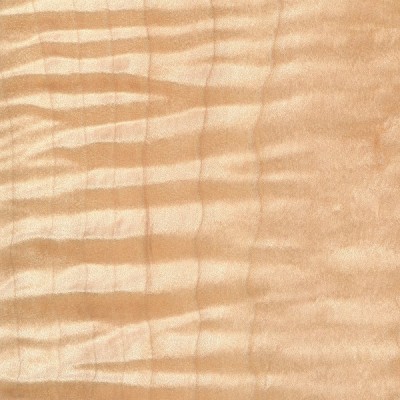
4. Consider the weight and hardness of the wood.
If it’s possible, pick the piece of wood up and get a sense of its weight, and compare it to other known wood species. Try gouging the edge with your fingernail to get a sense of its hardness. If you have a scale, you can take measurements of the length, width, and thickness of the wood, and combine them to find the density of the wood. This can be helpful to compare to other density readings found in the database. When examining the wood in question, compare it to other known wood species, and ask yourself these questions:
Is the wood dry?
Wood from freshly felled trees, or wood that has been stored in an extremely humid environment will have very high moisture contents. In some freshly sawn pieces, moisture could account for over half of the wood’s total weight! Likewise, wood that has been stored in extremely dry conditions of less than 25% relative humidity will most likely feel lighter than average.
How does the wood’s weight compare to other species?
Taking into account the size of the board, how does its weight compare to other benchmark woods? Is it heavier than oak? Is it lighter than pine? Look at the weight numbers for a few wood species that are close to yours, and get a ballpark estimate of its weight.
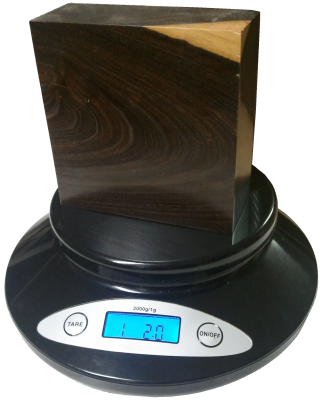
How hard is the wood?
Obviously softwoods will tend to be softer than hardwoods, but try to get a sense of how it compares to other known woods. Density and hardness are closely related, so if the wood is heavy, it will most likely be hard too. If the wood is a part of a finished item that you can’t adequately weigh, you might be able to test the hardness by gouging it in an inconspicuous area. Also, if it is used in a piece of furniture, such as a tabletop, a general idea of its hardness can be assessed by the number and depth of the gouges/dings in the piece given its age and use. A tabletop made of pine will have much deeper dents than a tabletop made of Oak. Additionally, you can always try the “fingernail test” as a rough hardness indicator: find a crisp edge of the wood, and with your fingernail try to push in as hard as you can and see if you’re able to make a dent in the wood.
5. Consider its history.
Many times we forget common sense and logic when attempting to identify wood. If you’ve got a piece of Amish furniture from Pennsylvania, chances are more likely that the wood will be made of something like black walnut or cherry, and not African wenge or jatoba. You might call it “wood profiling,” but sometimes it can pay to be a little prejudiced when it comes to wood identification. Some common-sense questions to ask yourself when trying to identify a piece of wood:
Where did it come from?
Knowing as much as you can about the source of the wood—even the smallest details—can be helpful. If the wood came from a wood pile or a lumber mill where all the pieces were from trees processed locally, then the potential species are immediately limited. If the wood came from a builder of antique furniture, or a boat-builder, or a trim carpenter: each of these occupations will tend to use certain species of woods much more often than others, making a logical guess much simpler.
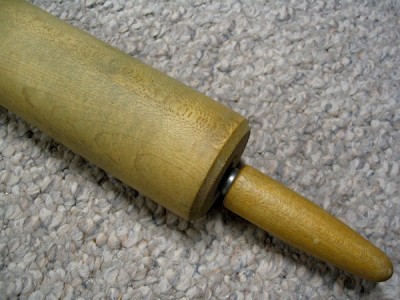
How old is it?
As with the wood’s source, its age will also help in identification purposes. Not only will it help to determine if the wood should have developed a natural patina, but it will also suggest certain species which were more prevalent at different times in history. For instance, many acoustic guitars made before the 1990s have featured Brazilian rosewood backs/sides, yet due to CITES restrictions placed upon that species, East Indian rosewood became a much more common species on newer guitars. (And this is a continuing shift as newer replacements are sought for rosewoods altogether.)
How large is the piece of wood?
Some species of trees are typically very small—some are even considered shrubs—while others get quite large. For instance, if you see a large panel or section of wood that’s entirely black, chances are it’s either painted, dyed, or stained: Gaboon ebony and related species are typically very small and very expensive.
What is the wood’s intended use?
Simply knowing what the wood was intended for—when considered in conjunction with where it came from and how old it is—can give you many clues to help identify it. In some applications, certain wood species are used much more frequently than others, so that you can make an educated guess as to the species of the wood based upon the application where it was used. For instance, in the United States: many older houses with solid hardwood floors have commonly used either red oak or hard maple; many antique furniture pieces have featured quartersawn white oak; many violins have spruce tops; many closet items used aromatic red cedar, and so forth. While it’s not a 100% guarantee, “profiling” the wood in question will help reduce the number of possible suspects, and aid in deducing the correct species.
6. Find the X-Factor.
Sometimes, after all the normal characteristics of a sample have been considered, the identity of the wood in question is still not apparent. In these instances—particularly in situations where a sample has been narrowed down to only a few possible remaining choices—it’s sometimes helpful to bring in specialized tests and other narrower means of identification.
The following techniques and recommendations don’t necessarily have a wide application in initially sorting out wood species and eliminating large swaths of wood species, but will most likely be of use only as a final step in special identification circumstances.
Odor
Believe it or not, freshly machined wood can have a very identifiable scent. When your eyes and hands can’t quite get a definitive answer, sometimes your nose can. Assuming there is no stain, finish, or preservative on or in the wood, quickly sand, saw, or otherwise machine a section of the wood in question, and take a whiff of the aroma.
Although new scents can be very difficult to express in words, many times the scent of an unknown wood may be similar to other known scents. For instance, rosewoods (Dalbergia spp.) are so named for their characteristic odor that is reminiscent of roses. Although difficult to directly communicate, with enough firsthand experience scents can become a memorable and powerful means of wood identification.
Fluorescence
While certain woods can appear basically identical to one another under normal lighting conditions, when exposed to certain wavelengths—such as those found in blacklights—the wood will absorb and emit light in a different (visible) wavelength. This phenomenon is known as fluorescence, and certain woods can be distinguished by the presence or absence of their fluorescent qualities. See the article Fluorescence: A Secret Weapon in Wood Identification for more information.
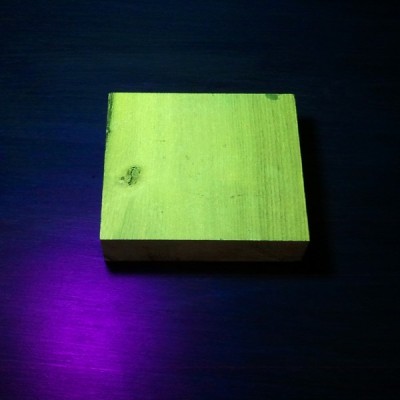
Chemical Testing
There are only a small number of chemical tests regularly used on wood, most of which are very specialized and were developed to help distinguish easily confused species with one another. They work by detecting differences in the composition of heartwood extractives. A chemical substance (called a reagent) is usually dissolved in water and applied to the wood surface: the surface is then observed for any type of chemical reaction (and accompanying color change) that may occur. Two of the most useful are the tests that are meant to separate Red and White Oak, and Red and Hard Maple.
Heartwood Extractives Leachability
Sometimes a wood species will have heartwood extractives that will be readily leachable in water and capable of conspicuously tinting a solution of water a specific color. For instance, the heartwood extractives contained in osage orange (Maclura pomifera) contain a yellowish-brown dye that is soluble in water. (This can sometimes be observed anecdotally when the wood is glued with a water-based adhesive: the glue’s squeeze-out is an unusually vibrant yellow.)
In a simple water extract color test, wood shavings are mixed with water in a vial, test tube, or other suitably small container, and the color of the water is observed after a few minutes. If the heartwood extractives are leachable by water, then a corresponding color change should quickly occur.
In addition to osage orange (Maclura pomifera), merbau (Intsia spp.), and rengas (Gluta spp. and Melanorrhoea spp.) are also noted for their readily leachable heartwood extractives. Because this property is quite uncommon, it can serve to quickly differentiate these woods from other lookalikes.
7. Look at the endgrain.
Perhaps no other technique for accurate identification of wood is as helpful and conclusive as the magnified examination of the endgrain. Frequently, it brings the identification process from a mostly intuitive, unscientific process into a predictable, repeatable, and reliable procedure.
Looking at the endgrain with a magnifier shouldn’t be a mystifying or esoteric art. In many cases, it’s nearly as simple as examining small newsprint under a magnifying glass. There are three components necessary to reap the full benefits contained in the endgrain:
I. A prepared surface.
When working with wood in most capacities, it becomes quickly apparent that endgrain surfaces are not nearly as cooperative or as easily worked as face grain surfaces. However, in this case, it is absolutely critical that a clear and refined endgrain surface is obtained.
For a quick glance of a softwood sample, a very sharp knife or razor blade can be used to take a fresh slice from the endgrain. However, in many denser species, especially in tropical hardwoods, one of the best ways to obtain a clear endgrain view is through diligent sanding. It’s usually best to begin with a relatively smooth saw cut (as from a fine-toothed miter saw blade) and proceed through the grits, starting at around 100, and working up to at least 220 or 320 grit, preferably higher for the cleanest view.
II. The right magnifier.
It need not be expensive, but whatever tool is used to view the endgrain should have adequate magnifying power. In most instances, 10x magnification is ideal, however, anything within the range of 8 to 15x magnification should be suitable for endgrain viewing. (Standard magnifying glasses are typically in the range of 2 to 4x magnification.)
These stronger magnifiers, sometimes called loupes, usually have a smaller viewing area than standard magnifying glasses. Fancier models—with built in lights, or larger viewing surfaces—are available at a premium; but the most basic models are usually only a few dollars.
III. A trained eye.
The third element that constitutes a proper endgrain examination is simply knowing what to look for. In analyzing the patterns, colors, shapes, and spacing of the various anatomical features, there is a veritable storehouse of information within the endgrain—all waiting to be unlocked. Yet, if these elements have not been pointed out and learned, the array of features will simply seem like an unintelligible jumble. The discipline of recognizing anatomical endgrain features is not easily summed up in a few sentences or even a few paragraphs, but it is nonetheless critical to the identification process. To this end, an in-depth look should be given to the various categories, divisions, and elements that constitute endgrain wood identification on the macroscopic level. (In this regard, macroscopic denotes what can be seen with a low-powered, 10x hand lens—without the aid of a microscope—rather than simply what can be seen with the naked eye.) Because the anatomy between softwoods and hardwoods is so divergent, each will be considered and examined separately:Still stumped?
If you have a mysterious piece of wood that you’d like identified, you’ve got a few options for next steps:USDA’s Forest Products Laboratory
You can mail your physical wood samples to the Center for Wood Anatomy Research.
Pros:
- Free
- Professional wood identification
Cons:
- Only available to US citizens
- Slow turnaround times (up to a month or more)
- Limited to three IDs per year
See their Wood ID Factsheet for more info.
Alden Identification Service
You can mail your physical wood samples (even small sections taken from antiques) to Alden Identification Service.
Pros:
- Professional wood identification
- Faster turnaround times (ranging from a few days to a week or two)
Cons:
- Paid service
See their ordering page for more info. (Note that Harry Alden has written several books while at USDA, including both Hardwoods and Softwoods of North America.)
Ask for help online
If the wood ID is merely a curiosity, or non-critical, you can post pictures of the wood in question.
Pros:
- Free
- No need to send physical samples
Cons:
- Greatly limited by the quality of the pictures provided
- Extra work usually required to get adequate clarity in photos
See article of Common US Hardwoods to help find the most commonly used woods.
Get the hard copy
 If you’re interested in getting all that makes The Wood Database unique distilled into a single, real-world resource, there’s the book that’s based on the website—the Amazon.com best-seller, WOOD! Identifying and Using Hundreds of Woods Worldwide. It contains many of the most popular articles found on this website, as well as hundreds of wood profiles—laid out with the same clarity and convenience of the website—packaged in a shop-friendly hardcover book.
If you’re interested in getting all that makes The Wood Database unique distilled into a single, real-world resource, there’s the book that’s based on the website—the Amazon.com best-seller, WOOD! Identifying and Using Hundreds of Woods Worldwide. It contains many of the most popular articles found on this website, as well as hundreds of wood profiles—laid out with the same clarity and convenience of the website—packaged in a shop-friendly hardcover book. 





Why I will no longer be replying to every wood ID request I’ve replied to literally thousands of wood ID requests on this site over the past 13+ years, but as the site’s popularity has grown, so has the time demands for ID on a daily basis. (Contrary to what some may seem to think, I am not some all-knowing wood wizard that can instantly ID your wood. It can actually take me a long time to sift through a lot of different resources.) Over the past few years, my backlog of pending wood species to be added to the… Read more »
Can you tell me about this table? Im thinking its teak but im not sure.
Teak is definitely a possibility. But it’s tough to tell from the pictures.
Teak is one of those woods that can be difficult to positively ID in a finished project without seeing a clear, sanded view of the endgrain.
Alright. When I sand it down I’ll take a picture.
walnut
I have 2 end tables and a coffee table that I was told came from Japan in 1939, I am curious as to what kind of wood they are made of. They are very heavy. First picture is the top of end table 1, second picture is the front of end table 1, 3rd picture is of the coffee table, 4th picture is of detail on top of coffee table. The last picture is of the inside if one of the doors on one of the end tables. Can anyone tell me what kind of wood these are made of?
That furniture is typical of Philippine hand-carved wood furniture. It is usually made of Philippine Mahogany or Nara wood.
Its a narra (Pterocarpus indicus). The carving is typical rural farming Philippine landscape [farmer on carabao with a kariton, a ricefield panorama w/ a mountain view; & a banana] of years ago. Narra, though marketted in the U.S. in the 20s-70s as Philippine Mahogany (general term for all woods coming from Philippines), it is not a true mahogany.
I recently purchased an old piece of furniture at an Estate Sale. It is an unusual piece in its design and is made of all solid hardwoods, including the drawer bottoms, sides and back. I was able to find out that the former owner was from Argentina, and I suspect this piece was built there and moved to the USA. The outside surface has a thin, peeling coat of flat black paint which I am removing with a scraper. Is there a database of South American tropical hardwood out there someplace? I am very familiar with American woods, and those… Read more »
Don’t know of any database specifically for South American timbers. If it’s solid wood, your best bet is to examine the endgrain.
Can anyone tell what kind of wood this might be based on the pattern shown. It’s a couple pics of an antique hutch I believe to have been made in the early 1990s
First pic looks a bit like quartersawn white oak, stained dark brown. No clue on the second picture.
They very top piece I believe to be Plywood stained,#2, piece I believe it to be to be Oak, The decorative piece is pine, the unfinished front piece, also pine, side ufinshed piece birch, and the piece is Maple.
Chestnut or butternut
Wood recognise tool:
https://capitalpolishers.com/wood-names-search/
Hi, I’m not sure how old this desk is, I bought it from an estate sale. Any ideas on what kind of wood?
Thanks in advance,
kurt
This is a closer photo of the wood.
Hii am thinking of sanding and painting my fire suround. I would like to know the correct wayto do this and I would also like to know what type of wood it is.
Rose, 99.9% sure that it is Oak. There is a .01% chance it’s Ash with a golden oak stain on it, but highly unlikely. This isn’t one of those mystery wood situations, pretty straightforward diagnosis. (also called a no-brainer) there are, however 147 or so different varieties of oak, “white, red, blackjack, live, laurel, silk, etc, etc” and no one can really tell you which one it is. Default with White Oak, or Red Oak. Since your table & chairs are yellow, and not red, you’re pretty safe with white oak, and a “golden oak” stain. Look under the table… Read more »
Thanks Ted are you sure?
Blam – where did you come from? Nobody’s making any trash cabinets here, we’re trying to identify wood species for novices. Crawl back inside your formica and particle board bomb-shelter and take a couple more hits off your bong, dude. Chill out.
Rose – Oak
Found this coffee table and stripped it- it has wavy wood on the outside of it-can you tell me what it is?
You so called furniture makers and cabinet builders should be ashamed of the garbage materials you use.
Oh sorry about the neck will get some close ups in morning thankyou very much
Can anyone tell me what type of wood this is?
Cassi – One guest to another, quite often one will find older chairs made with several different kinds of wood, particularly when containing carved or turned wood, including birch, maple, oak, walnut, and cherry. Yours could be any or several of these.
Nice scroll on the arm.
Photo too vague to make a determination. Resubmit your request with closeups made with a real camera.
My neck is hurting from looking at this sideways photo, try a different angle.
Hi there wondering if you could please tell me what tis wood may be sooo heavy and old so I’m told thanks
And another:
Hi, I picked up this giant piece of raw wood in Upstate New York which I intend to use to make shelves. The guy who sold it to me said someone told him it’s ‘butternut’ wood but he seemed pretty unsure (I didn’t know what this was). Can someone help me identify it?
Thanks!
Oops meant hello Ted, lol
Hello Bob, thank you for responding. Here is another photo close up. I did press a nail into the wood and it left a mark a small one but its ere…this frame is not heavy either if that helps.
Hi
Any idea what this wood might be I know its a long shot!
thanks in advance
D
Bob – looks like Fir to me, Hemlock looks very similar, too Marie – it might have held two equally sized mirrors that pivoted in the center for a makeup mirror – with some kind of pin locks on the long sides? The last photo is the only one I’d make a guess from, and I’d say mahogany. If you were to take a super closup of the chip in the top left corner of your first “collage”, that might give a better hint. No hovering, all 4 shots expand into one larger replica of the collage. Might have been… Read more »
Another
Another close up…it has four holes along one side if the four foot length, and two holes adjacent to each other in the middle along the two foot sides.like it may have been something that rotated?
Hello, I was told that this is a vintage redwood frame. It appears to have maybe fit over a dresser, but no place to insert a mirror. the craftsmanship is ornate and it is about 4 feet tall by 2.5 feet . I have created a collage and you should be able to hover over the photos.if not I will godly snap more. I took thee in regular daylight. Please let me know if anyone can identify this. Thank you.
I’m trying to identify what type of wood this is. Any help would be be appreciated. Thanks!
Katherine: Pine
I hope all persons planning on posting a photo see the difference between the colors depending on what the light source is. Amazing…
Hi I was wondering if you could help me figure out what type of wood this is, the first is with flash the second has the flash off. Thank you
Thanks, guys, for your expertise and thoughts.
hi
trying to id the wood used to frame windows and doors in my home. seller wasn’t sure. thought it was oak but have never seen this color exactly.
Simon, its hard to tell from just the pictures. I think in nearly all cases of softwood ID, it’s important to to be able to confirm/deny the presence of resin canals. I can’t really say definitively from your pictures, but you having a firsthand look, should be able to tell. Check out this article:
https://www.wood-database.com/wood-articles/softwood-anatomy/
HA. Cedar doesn’t smell like urine – that’s from the hamsters….
Sniffing around the internet, the grey coloration makes me think hemlock, but the high contrast and style of grain makes me think douglas fir. I think, Ted, you might’ve got it. And you might be right about the burn damage. (The knot popped out while I was planing and disappeared off my apartment balcony!) As for weathering, I would assume that it would be weathered only on the first few mm of surface, but this was grey throughout. And I can’t say I’ve ever smelled a hope chest. I incline away from the cedar idea. I’ve smelled a lot of… Read more »
Simon- Does the wood smell like hamster litter or a Hope Chest? Western Red Cedar or maybe White Cedar – I haven’t been around that as much as red cedar. Does it smell like Pine-Sol or a Xmas tree? Southern Yellow Pine. It looks like old-growth (you said it was reclaimed wood, so it could be really old) – cut from a virgin stand of timber, thus the close-set rings. The 1st photo makes me think cedar, because of the way the knots look, and the graining in that & photo #3. But if it’s gray color is from weathering,… Read more »
@El It’s very hard to tell, but the exterior wood appears to be a medium to coarse grained wood. Definitely not cherry, but it could be Jatoba (aka Brazilian Cherry) — or a zillion other hardwoods that are reddish brown and have medium to large open pores. I doubt it’s rosewood, color and grain looks wrong. Knowing the source of where the chest was made might help.
and endgrain:
the other piece…
I’ll post a few more pics:
Hi Eric,
I just made a little shelf in my kitchen using some reclaimed cut off from a place I volunteered at. Not sure what type of wood I used. :) Maybe you can help. Smelled lovely to work with. I’ve assumed from the colour that both pieces are from the same species. Not sure how old. I finished it with Clapham’s furniture polish (beeswax/carnauba)which upped the contrast in the grain, but didn’t change much the colour.
Please Eric, could you delete my subscription!!! I’m inundated with all these unrelated follow-up emails!! I’ve tried to delete it a couple of times, but without success. Thanks, John.
Eric, yes I believe that is the smell. And I believe the chest is for storing clothing.
What about the exterior? Do you think it is a cherry or rosewood?
@El Does it smell somewhat like Vick’s VapoRub? At first glance it looked like a type of cedar or juniper, but looking closer the wood is clearly grainy with open pores, meaning a hardwood.
My first guess would be Camphor for the interior lining, or maybe Spanish Cedar (not a true softwood/cedar), though the color and streaks don’t seem to match Spanish Cedar’s generally bland appearance.
Here is a close-up of an unfinished piece of the outside of the trunk. The color has a bit more red than the picture shows.
Here is a close-up of the inside.
Hi, I am attempting to ID the wood in my chest/ trunk. It appears that the wood on the outside is different from the inside. Inside has a very sweet, distinctive smell.
Here is a picture of the inside.
Ben, super job matching veneers! Glad I could help. Definitely post finished product.
Keith, can’t tell, not enough detail. Well, really NO detail at all. The enlargement feature on the web page gives the same size photo as what’s on the page. It’s just a blur of brownish yaya. Maple is an educated guess for the purpose you’ve stated, strong, heavy, dense wood. Light colored. Need to get that Macro fixed, or borrow a camera from a bud.
I would like to identify some lumber salvaged from crates transporting heavy chains. The shipment came from Maine, USA. The lumber has some weight to it, so I’m assuming it’s semi-hard or hard wood. My best guess is maple. My camera macro feature isn’t working well, so I apologize for the picture closeness. Any opinions are welcome and I thank you in advance.
It is 1920’s to 1940’s… (it took along time for surfboards to evolve from this).
Tom Blake was on Duke Kahanamoku’s Olympic Gold Medal Swim Team (Duke, a Hawaiian, is considered the father of the sport of surfing)
Blake revolutionized the sport with his hollow board designs cutting the weight of the boards from maybe 120lbs to 40lbs, and later again as he is credited for the application of fins to surfboards.